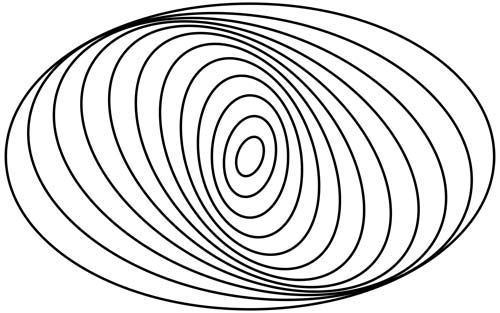density wave

Density wave theory explanation of spiral galaxy arms.
A density wave is a sound wave, or any other kind of material wave, that produces a series of alternate condensations and rarefactions of the material through which it passes.
The so-called density wave theory, first put forward by Bertil Lindblad in about 1925, is a possible explanation for the spiral arms of spiral galaxies. According to this idea, the arms represent regions of enhanced density (density waves) that rotate more slowly than the galaxy's stars and gas. As gas enters a density wave, it gets squeezed and makes new stars, some of which are short-lived blue stars that light the arms. Subsequent work by Lin and others attempts to explain the large-scale structure of spirals in terms of a small-amplitude wave propagating with fixed angular velocity. As the compression wave goes through, it triggers star formation on the leading edge of the spiral arms. Spiral density waves are believed to be generated by resonances in the gravitational interaction of the stars of a galaxy as they move in their orbits. On a much smaller scale, spiral density waves may play an influential role in the early evolution of planetary systems (see eccentric jovians).


